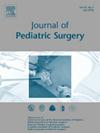Human Liver Organoids to Predict the Outcome of Kasai Portoenterostomy
IF 2.4
2区 医学
Q1 PEDIATRICS
引用次数: 0
Abstract
Background
Kasai portoenterostomy (KPE) remains the primary intervention for biliary atresia (BA), but its outcomes are highly variable. Reliable prognostic biomarkers remain elusive, complicating the management and prediction of postoperative progression.
Method
Liver biopsies from BA patients taken at and after KPE (post-KPE) were used to generate organoids for RNA-sequencing analysis. Control organoids were derived from non-BA livers. Differential gene expression and enrichment analyses were performed to assess post-KPE transcriptomic changes between native liver survivors (NLS) and patients who eventually became liver transplant recipients (LTR).
Results
Organoid datasets: 70 from liver biopsies at KPE (10 patients), 112 from post-KPE livers (13 livers; 12 patients), and 47 from control livers (9 patients). At KPE, BA organoids displayed mainly hepatocyte expression, a trait notably reduced in control organoids. Similarly, post-KPE organoids from NLS revealed a significant decrease in hepatocyte expression features and an overall increase in cholangiocyte expression features. A similar hepatocyte-to-cholangiocyte expression transition was evidenced in paired liver organoids (at- and post-KPE) generated from an NLS. In contrast, post-KPE organoids from LTR maintained a high level of hepatocyte expression features.
Conclusion
Our study demonstrated that an elevated expression of hepatocyte features in KPE organoids may indicate aberrant cholangiocyte development in BA livers. In contrast, a post-KPE hepatocyte-to-cholangiocyte expression transition in NLS may imply effective biliary recovery. The lack of this transition in LTR organoids indicates ongoing disease progression, highlighting the potential for organoid-based transcriptomic profiling to inform KPE success and guide BA management.
Level of Evidence
Level III.
预测葛西肠管造口术结果的人体肝脏器官组织
葛西肠管造口术(KPE)仍是治疗胆道闭锁(BA)的主要方法,但其结果却千差万别。可靠的预后生物标志物仍未出现,使术后管理和病情发展预测变得更加复杂。KPE术前和术后(KPE术后)BA患者的肝活检组织被用来生成RNA序列分析所需的器官组织。对照组器官组织来自非 BA 患者的肝脏。进行了差异基因表达和富集分析,以评估原肝存活者(NLS)和最终成为肝移植受者(LTR)的患者在 KPE 后转录组的变化。类器官数据集:70 个来自 KPE 时的肝活检组织(10 名患者),112 个来自 KPE 后的肝脏(13 个肝脏;12 名患者),47 个来自对照组肝脏(9 名患者)。在 KPE 时,BA 器官主要表现为肝细胞表达,而对照组器官的肝细胞表达明显减少。同样,来自 NLS 的 KPE 后器官组织显示肝细胞表达特征显著减少,而胆管细胞表达特征总体增加。由 NLS 生成的成对肝脏器官组织(KPE 前和 KPE 后)也出现了类似的肝细胞向胆管细胞表达的转变。相比之下,来自 LTR 的后 KPE 有机体保持了高水平的肝细胞表达特征。我们的研究表明,KPE 有机体中肝细胞特征表达的升高可能表明 BA 肝中胆管细胞发育异常。相反,NLS 中 KPE 后肝细胞向胆管细胞表达的转变可能意味着胆道的有效恢复。LTR 器官组织中缺乏这种转变表明疾病仍在进展,这凸显了基于器官组织的转录组学分析为 KPE 成功与否提供信息并指导 BA 管理的潜力。三级
本文章由计算机程序翻译,如有差异,请以英文原文为准。
求助全文
约1分钟内获得全文
求助全文
来源期刊
CiteScore
1.10
自引率
12.50%
发文量
569
审稿时长
38 days
期刊介绍:
The journal presents original contributions as well as a complete international abstracts section and other special departments to provide the most current source of information and references in pediatric surgery. The journal is based on the need to improve the surgical care of infants and children, not only through advances in physiology, pathology and surgical techniques, but also by attention to the unique emotional and physical needs of the young patient.

 求助内容:
求助内容: 应助结果提醒方式:
应助结果提醒方式:


